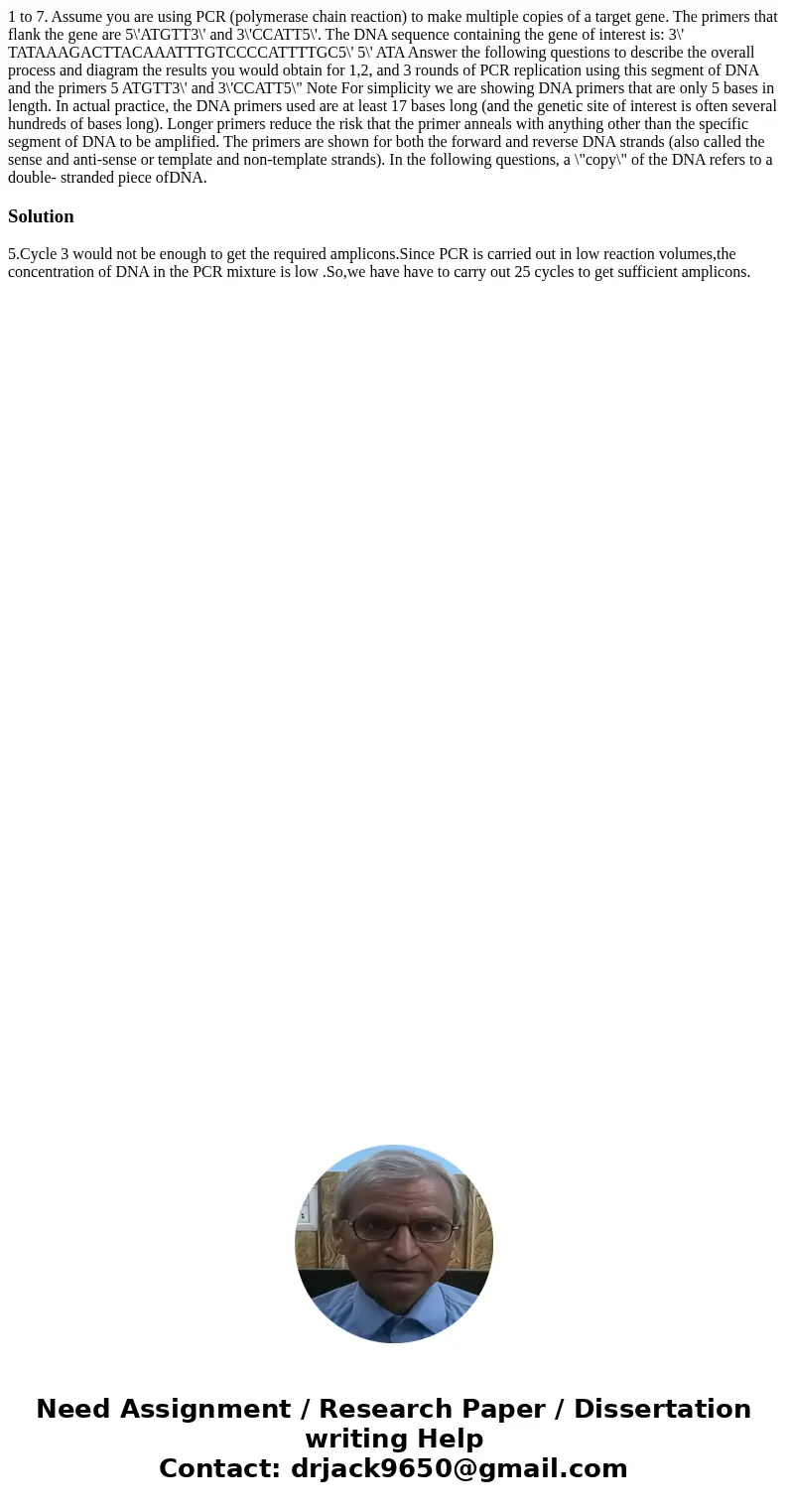1 to 7 Assume you are using PCR polymerase chain reaction to
1 to 7. Assume you are using PCR (polymerase chain reaction) to make multiple copies of a target gene. The primers that flank the gene are 5\'ATGTT3\' and 3\'CCATT5\'. The DNA sequence containing the gene of interest is: 3\' TATAAAGACTTACAAATTTGTCCCCATTTTGC5\' 5\' ATA Answer the following questions to describe the overall process and diagram the results you would obtain for 1,2, and 3 rounds of PCR replication using this segment of DNA and the primers 5 ATGTT3\' and 3\'CCATT5\" Note For simplicity we are showing DNA primers that are only 5 bases in length. In actual practice, the DNA primers used are at least 17 bases long (and the genetic site of interest is often several hundreds of bases long). Longer primers reduce the risk that the primer anneals with anything other than the specific segment of DNA to be amplified. The primers are shown for both the forward and reverse DNA strands (also called the sense and anti-sense or template and non-template strands). In the following questions, a \"copy\" of the DNA refers to a double- stranded piece ofDNA. 
Solution
5.Cycle 3 would not be enough to get the required amplicons.Since PCR is carried out in low reaction volumes,the concentration of DNA in the PCR mixture is low .So,we have have to carry out 25 cycles to get sufficient amplicons.

 Homework Sourse
Homework Sourse